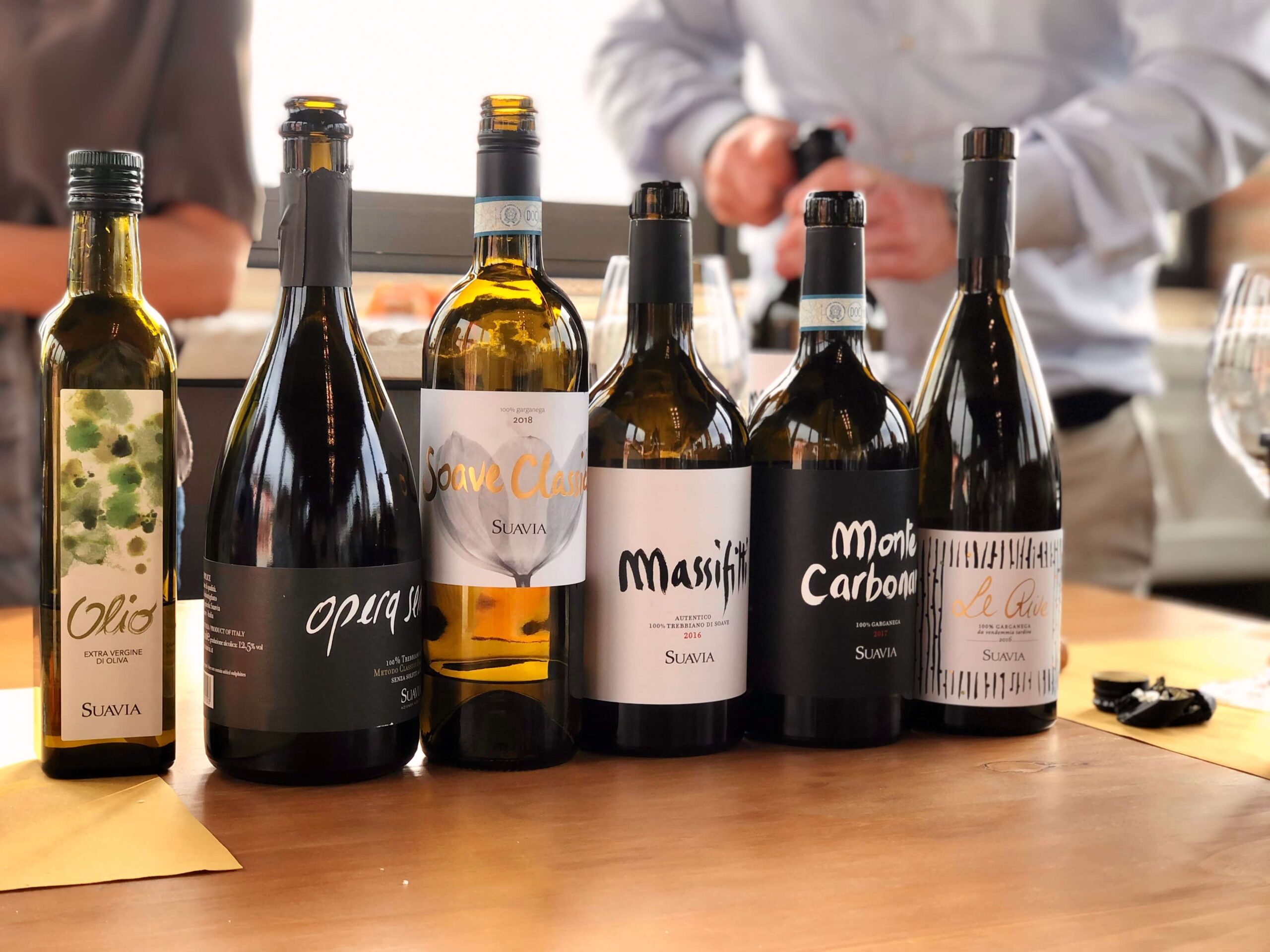Yes I’m going to Suavia, the wine producer that produces my favorite Soave!
When people ask me what I like most about the wine world, I always say: “To follow my passion for wine”. What I actually mean is, “Going on a wine trip!”
My boyfriend recently took me to the Champagne region for my birthday (read great tips soon on here) and two weeks later I was on a plane to Verona to visit some of the great wine producers of the region, with renowned wine importer Hans Bijvoets and a couple of Dutch sommeliers. What more could a wine freak want!
Arriving in Verona we drove by minivan to winery Suavia. A Soave producer in the middle of the Soave Classico area.
About Soave Classico
Soave Classico is located in the hills surrounding the village of Soave. This is the historical production area where the first Soaves were once made. Nowadays a lot of Soave is produced outside the Classico area and this is not always known for good quality. Down the hill the soil is alluvial, the vines don’t have to work hard to drink and the soil contains few exciting minerals. This, coupled with dull grape varieties and high yields can have disastrous consequences.
Not with Suavia, where they know what quality is. Within the Classico area they own 30 hectares of quality vineyards within the Cru’s: Fittà, Carbonare, Castellaro and Tremenalto.
During a tour through the vineyards we were told what makes the soil in this area so special. In the early days the area consisted of a large volcano. The volcano is no longer, but the volcanic soil remained. The soil consists of dark and soft basaltic lava where the roots of the vines have to crawl very deep to get to water. This means that the roots absorb a lot of minerals from the soil. This makes the Soaves from the Classico area so fucking, excuzes le mot, tasty.
A little more about the grapes
The vines in this area are planted according to the Pergola Veronese system. The pergola system guides the vine vertically into the air where the leaves can grow over a frame. This ensures that a kind of roof forms at the top of the vines, under which the grapes can chill out in the semi-shade and do not suffer too much from the sun, which in Italy is not to be taken lightly.
Now the grapes. The queen of the Soave is the Garganega. Watch my Youtube video here for the pronunciation. It takes a little bit of your time but then you won’t be ridiculous for the rest of your life when you say karkanéka again. Other allowed grape varieties are the Trebbiano, Chardonnay and Pinot bianco.
The best Soaves often consist entirely of Garganega, although Suavia produces a 100% Trebbiano di Soave under the name Massifitti, which is not to be sneezed at. This covers 2% of the planting and has always been a nobler grape than the Garganega. This grape is related to the Verdicchio di Lugana. Because of the regulations the wine comes on the market as an IGT and not as DOC Soave Classico but going against the rules is only fun.
My favorite Soave from Suavia? Definitely the Monte Carbonare, 100% Garganega. The wine comes from the highest hills in the Soave Classico area and the vines are 75 years old. This wine wins the Tre Bicchieri time after time and is described as an ‘Icon wine’ for Soave Classico. In Amsterdam it can be order by the glass at Brasserie van Baerle. The wine is tropical and has hints of lemon, is smoky and full, and has lots of minerality due to the volcanic soil. The wine has not been in touch with any oak.
Thirsty? You can order it here. https://www.anfors-imperial.com/soave-classico-monte-carbonare-2017-suavia

